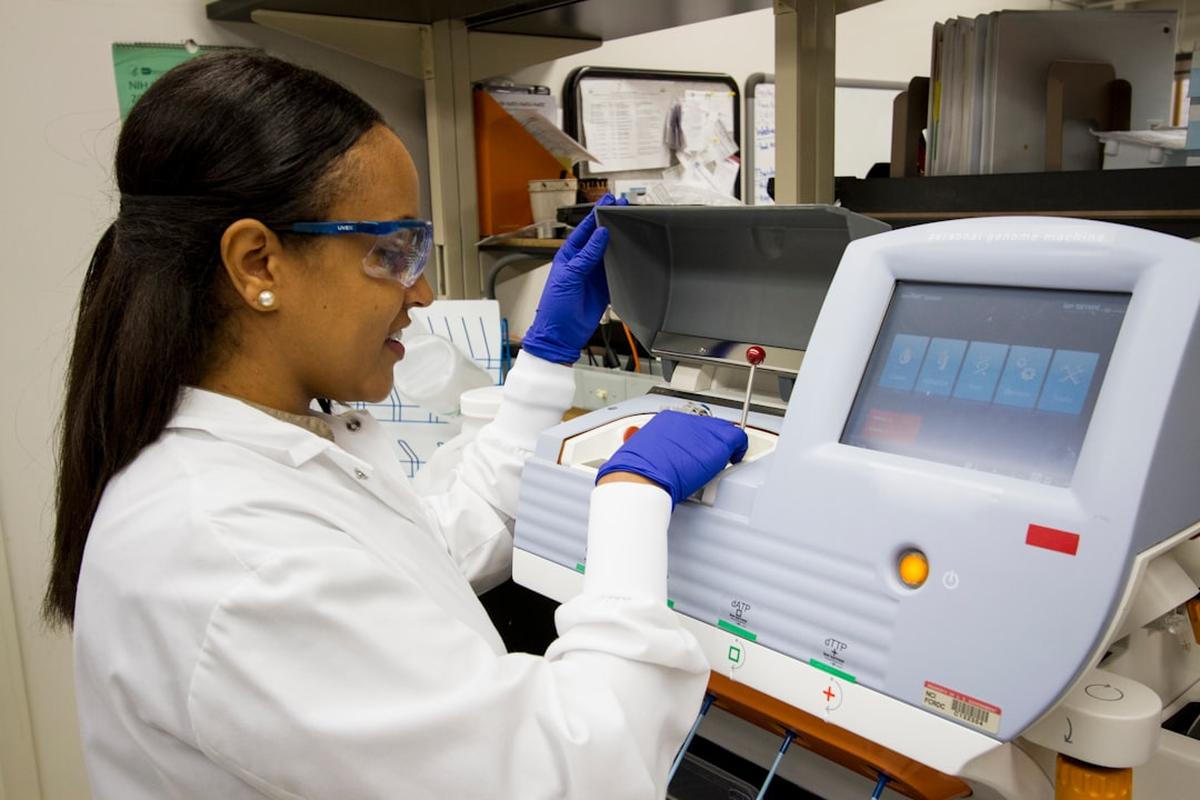Brief Overview of Human Evolution
Human evolution is a fascinating and complex journey that has spanned millions of years. From our humble beginnings as simple, single-celled organisms, we have evolved into the complex, intelligent beings we are today. This journey has been shaped by countless factors, from environmental changes to genetic mutations, leading to the diverse array of human traits and characteristics we see today.
Role of DNA in Understanding Evolution
One of the most powerful tools in understanding this evolutionary journey is DNA. Deoxyribonucleic acid, or DNA, is the blueprint of life, containing the instructions that dictate every aspect of an organism’s form and function. By studying DNA, scientists can trace the lineage of species, identify common ancestors, and understand the genetic changes that have driven evolution.
Understanding DNA and its Role in Evolution
Explanation of DNA and its Function
DNA is a long, double-stranded molecule that contains the genetic instructions for the development and functioning of all known living organisms and many viruses. It is composed of four chemical bases: adenine (A), guanine (G), cytosine (C), and thymine (T). These bases pair up with each other, A with T and C with G, to form units called base pairs.
DNA as a Blueprint of Life
Each base pair in a DNA molecule carries a piece of information, a sort of instruction code, for the organism. These instructions are used to build and maintain the organism, from determining its physical characteristics to regulating its biological functions. In essence, DNA serves as the blueprint of life, dictating the traits and characteristics of every living organism.
DNA Mutations and Evolution
Mutations, or changes in the DNA sequence, play a crucial role in evolution. They introduce new genetic variations into a population, some of which may provide an advantage in survival and reproduction. Over time, these advantageous traits become more common in the population, leading to evolutionary change.
The Genetic Link between Humans and Primates
The Common Ancestor of Humans and Chimpanzees
One of the most striking pieces of evidence for human evolution is our close genetic relationship with other primates, particularly chimpanzees. Scientists estimate that humans and chimpanzees diverged from a common ancestor around 5 to 7 million years ago. This ancestor was likely a primate species that shared traits with both modern humans and chimpanzees.
Shared DNA Traits between Humans and Primates
Despite millions of years of separate evolution, humans and chimpanzees share a remarkable amount of genetic material. In fact, studies have shown that about 98.7% of our DNA is identical to that of chimpanzees. This high degree of genetic similarity is a strong indicator of our shared ancestry and provides compelling evidence for human evolution.
Divergence from a Common Ancestor
Over time, the genetic differences between humans and chimpanzees have accumulated, leading to the distinct species we see today. These differences are the result of mutations that occurred in the DNA of our common ancestor and were passed down to subsequent generations. By studying these genetic differences, scientists can gain insights into the evolutionary changes that have shaped our species.
DNA Evidence of Human Evolution
Genetic Similarities and Differences
The genetic similarities and differences between humans and other species provide valuable clues about our evolutionary history. For example, by comparing the DNA of humans and other primates, scientists can identify the genetic changes that have occurred since our divergence from a common ancestor. These changes can help us understand the evolutionary processes that have shaped our species and led to our unique human traits.
Tracing Human Evolution through Mitochondrial DNA
Mitochondrial DNA (mtDNA) is a small portion of our DNA that is passed down from mother to child. Because of its unique inheritance pattern, mtDNA can be used to trace maternal lineages and understand human evolution. Studies of mtDNA have revealed a wealth of information about our species’ past, including evidence of a recent common ancestor for all humans, often referred to as “Mitochondrial Eve.”
Chromosomal Evidence of Human Evolution
Another compelling piece of evidence for human evolution comes from our chromosomes. Humans have 23 pairs of chromosomes, while most other primates have 24. This difference is due to a fusion of two ancestral chromosomes that occurred in the human lineage after our divergence from other primates. This chromosomal fusion is a clear genetic marker of our evolutionary history and provides strong evidence for human evolution.
DNA and the Out of Africa Theory
Overview of the Out of Africa Theory
The Out of Africa theory proposes that modern humans evolved in Africa and then spread out to the rest of the world, replacing other hominid species. This theory is supported by a wealth of genetic, archaeological, and paleontological evidence.
Genetic Evidence Supporting the Out of Africa Theory
Genetic studies have provided strong support for the Out of Africa theory. For example, analyses of mitochondrial DNA have shown that all living humans can trace their ancestry back to a single woman who lived in Africa about 200,000 years ago. Similarly, studies of Y-chromosome DNA, which is passed down from father to son, point to a single male ancestor who also lived in Africa around the same time.
Criticisms and Counterarguments
Despite the strong evidence supporting the Out of Africa theory, it is not without its critics. Some argue that the genetic evidence can be interpreted in different ways, or that it does not rule out the possibility of interbreeding between modern humans and other hominid species. However, the majority of scientists agree that the Out of Africa theory provides the best explanation for the available evidence.
DNA and the Evolution of Human Traits
Evolution of Bipedalism
One of the defining characteristics of humans is our ability to walk on two legs, a trait known as bipedalism. Genetic studies have identified several genes that are associated with bipedalism, providing insights into how this trait evolved. For example, the gene PITX1 plays a crucial role in the development of hind limbs and has been linked to the evolution of bipedalism in humans.
Evolution of Brain Size and Complexity
Another key human trait is our large, complex brain. Studies have identified several genes that are associated with brain size and complexity, such as ASPM and MCPH1. Changes in these genes may have contributed to the evolution of our large brains, enabling the development of advanced cognitive abilities such as language and complex problem-solving.
Evolution of Language and Communication
Language and communication are fundamental aspects of human society, and their evolution is closely tied to our genetic makeup. For example, the FOXP2 gene is known to play a crucial role in speech and language development. Mutations in this gene can lead to speech and language disorders, suggesting that changes in FOXP2 may have been important in the evolution of human language.
Modern Human Genetic Diversity and Evolution
Understanding Human Genetic Variation
Human genetic variation is the diversity in DNA sequences among individuals. This variation is a result of mutations, genetic recombination, and other processes, and it is the raw material for evolution. By studying human genetic variation, scientists can gain insights into our species’ history, health, and ongoing evolution.
How Genetic Diversity Proves Ongoing Human Evolution
Genetic diversity is a clear sign of ongoing human evolution. It provides the variation that natural selection can act upon, leading to the evolution of new traits and characteristics. For example, variations in the gene SLC24A5 have been linked to skin color, with lighter skin associated with higher frequencies of a particular variant in populations living at higher latitudes. This is likely an evolutionary response to varying levels of sunlight and the need to synthesize vitamin D.
Impact of Migration and Interbreeding on Human Evolution
Migration and interbreeding have played significant roles in shaping human genetic diversity and evolution. As humans migrated out of Africa and spread across the globe, they encountered and interbred with other hominid species, such as Neanderthals and Denisovans. This interbreeding has left a mark on our genome, with modern humans outside of Africa carrying a small percentage of Neanderthal or Denisovan DNA.
The Future of Human Evolution: Insights from DNA
Predicting Future Evolutionary Changes
While it is impossible to predict the exact course of future human evolution, studies of our DNA can provide some clues. For example, recent research has identified several genetic variants that are becoming more common in certain populations, suggesting that these traits may be advantageous and could become more prevalent in the future.
Role of Genetic Engineering in Human Evolution
Genetic engineering technologies, such as CRISPR, have the potential to dramatically alter the course of human evolution. These technologies allow scientists to directly manipulate the DNA of living organisms, potentially introducing new traits or eliminating undesirable ones. While this could have profound benefits, such as eliminating genetic diseases, it also raises a host of ethical and societal issues.
Ethical Considerations in Genetic Manipulation of Human Evolution
The prospect of genetically engineering humans raises a host of ethical considerations. For example, who gets to decide what traits are desirable or undesirable? Could this lead to a new form of eugenics, where certain traits are selected for and others are eliminated? These are complex questions that society will need to grapple with as these technologies continue to advance.
Closing Notes
Recap of How DNA Proves Human Evolution
Closing Notes, DNA provides compelling evidence for human evolution. From our close genetic relationship with other primates to the genetic changes that have shaped our unique human traits, the study of DNA has revolutionized our understanding of human evolution. As we continue to unravel the mysteries of our genome, we can look forward to even deeper insights into our past, present, and future as a species.
Importance of Continued Research in Human Evolution
Continued research in human evolution is crucial for understanding our species’ history and predicting our future trajectory. As we continue to explore our DNA, we will undoubtedly uncover new insights into our evolutionary journey, shedding light on the forces that have shaped us and the traits that make us uniquely human.
Frequently Asked Questions
What is DNA?
DNA, or deoxyribonucleic acid, is the molecule that carries the genetic instructions for the development and functioning of all known living organisms and many viruses.
How does DNA provide evidence for human evolution?
By studying DNA, scientists can trace the lineage of species, identify common ancestors, and understand the genetic changes that have driven evolution. For example, humans and chimpanzees share about 98.7% of their DNA, indicating a common ancestry.
What is the Out of Africa theory?
The Out of Africa theory proposes that modern humans evolved in Africa and then spread out to the rest of the world, replacing other hominid species. This theory is supported by a wealth of genetic, archaeological, and paleontological evidence.
How has DNA shaped human traits?
DNA carries the instructions for all of our physical characteristics and biological functions. Mutations, or changes in the DNA sequence, can lead to new traits, some of which may provide an advantage in survival and reproduction. Over time, these advantageous traits become more common in the population, leading to evolutionary change.
What is human genetic variation?
Human genetic variation is the diversity in DNA sequences among individuals. This variation is a result of mutations, genetic recombination, and other processes, and it is the raw material for evolution.
How might genetic engineering affect human evolution?
Genetic engineering technologies, such as CRISPR, have the potential to dramatically alter the course of human evolution. These technologies allow scientists to directly manipulate the DNA of living organisms, potentially introducing new traits or eliminating undesirable ones.
References
- Futuyma, D. J., & Kirkpatrick, M. (2017). Evolution. Sinauer Associates is an imprint of Oxford University Press.
- Nielsen, R. (2017). Molecular signatures of natural selection. Annual review of genetics, 51, 197-212.
- Scally, A., & Durbin, R. (2012). Revising the human mutation rate: implications for understanding human evolution. Nature reviews genetics, 13(10), 745-753.
- Stringer, C. (2016). The origin and evolution of Homo sapiens. Philosophical Transactions of the Royal Society B: Biological Sciences, 371(1698), 20150237.







